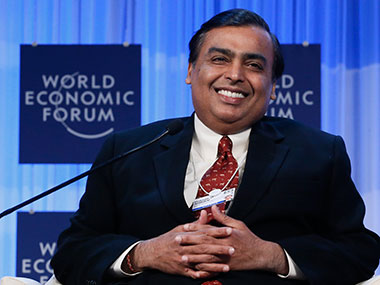India Today’s Power List 2013 is striking for several reasons. It recognises 29 businessmen, 7 media barons (also businessmen), a smattering of “intellectuals” (9) and Bollywood types (6), handful or cricket icons, one godman and socialite each. There isn’t a single social activist (Sorry, Arvind Kejriwal, Anna Hazare et al) or politician on the list. Yup, not even Narendra Modi — who features instead on a separate political top ten which is included, as editor-in-chief Aroon Purie makes clear in his opening note, as a concession to “those of our readers who have an interest in the business of government.” (And where he comes #2, on the heels of Sonia Gandhi). Politicians are excluded on principle because they “wield power only because of their position in government.” But businessmen who occupy their position because they were born into the right family — Jain, Godrej, Tata, Ambani, Birla — are apparently A-okay. The so-called Power List is less about reality than ideology:
It is my firm belief that the private sector has been, and continues to be, India’s engine of growth and development. The influence that this sector exxerts in terms of wealth creation, job creation and increasingly philanthropy makes it a larger force for good for the average Indian than an inefficient government.
In other words, this is a list of who Purie thinks ought to matter rather than who does. The top 11 most powerful Indians are all industrialists (Mukesh Ambani is #1). And Parmeshwar Godrej is a “social arbiter” who makes the cut but not a Kejriwal — an assessment perhaps even AAP detractors are unlikely to share. So does Sahara’s Subrata Roy who comes in at #22 “because he audaciously took on SEBI, claiming he had done nothing wrong, and deposited Rs 5000 crore with it to refund investors” (out of the goodness of his heart, no doubt). [caption id=“attachment_718356” align=“alignleft” width=“380”]  Mukesh Ambani is number on India’s Today Power List. Reuters[/caption] It is therefore amusing that not one of these hugely powerful business tycoons make Time magazine’s choice of the 100 most influential people in the world. The three Indians on the list include a politician (Finance Minister P Chidambaram), social activist (women’s rights lawyer Vrinda Grover), and Bollywood star (Aamir Khan) — the last also makes it at #14 on the IT Power List. This isn’t to say that Time’s choices are any less predictable or ideologically blinkered. In the Western imagination, India is defined by a narrow set of attributes: economy, Bollywood, backwardness. Figuring out the ‘India’ component of a global list is just a matter of checking those boxes. Exotic has always been India’s calling card in the West. And in our ’new India’ incarnation,our fabulous otherness is best epitomised by glitzy Bollywood. Even so, Aamir Khan makes the list not as an “Artist” — which is reserved for the likes of Stephen Spielberg, Jennifer Lawrence etc — but as a ‘Pioneer,’ praised for his “sense of social responsibility”. But it’s not all orientalism, any more. Thanks to liberalisation, our age-old charms have long been overshadowed by our well-endowed market economy — whose fortunes now rest in the charge of Palaniappan Chidambaram. And that’s the kind of economic clout they care about in New York — as opposed to any biz honcho’s personal wealth. After all, even Ambani, the richest man in India, is only #22 on Forbe’s annual list of billionaires. Power in India is determined by policy and therefore politics — irrespective of Purie’s stout protestations to the contrary. And while Narendra Modi may seem an obvious miss, Time is likely saving him for an election year, ie 2014. New India, however, can never quite get rid of its darker twin: the old India defined by violence, poverty and corruption. India coverage in Western publication is defined by the warring dialectic between the two. The 16 December gang-rape came to epitomise this still backward India in the foreign press. And since there isn’t one (living) person who can be picked as a symbol of the tragedy, the choice of a women rights lawyer is about as apt or arbitrary as any. Besides, at the very least, Grover’s selection offers a refreshing surprise unlike the India Today list which lists the same big-asset names year after year with predictable monotony. As one colleague put it, “They’ve picked everyone with serious money — just so no corporate big shot will be offended.” So here we are: two lists and two different kinds of selection bias. They reveal nothing other than the fact that the “idea of India” is a preconceived notion in the minds of magazine editors. And that may be why the rest of us stopped paying attention a long time ago.


)
)
)
)
)
)
)
)
)



